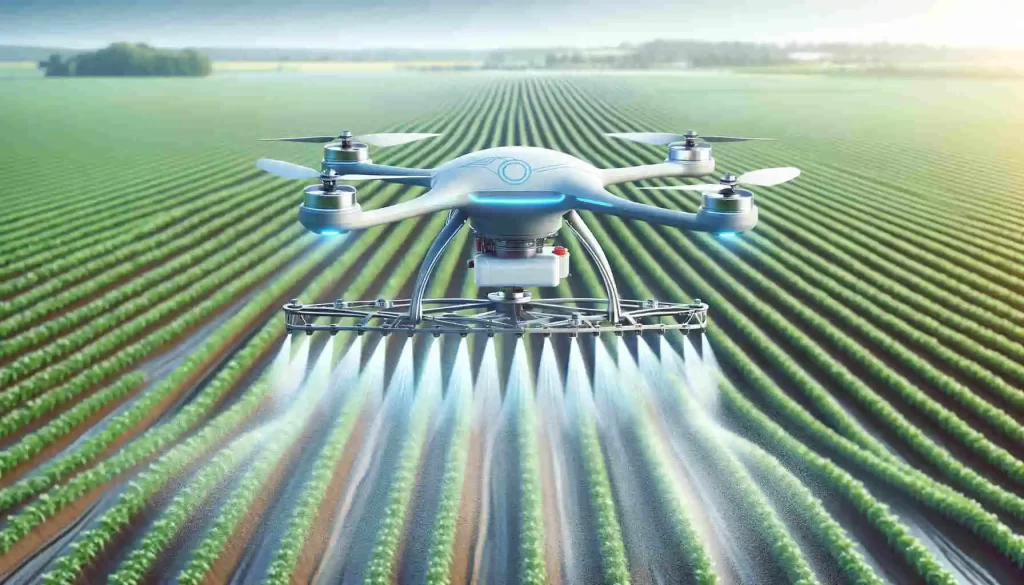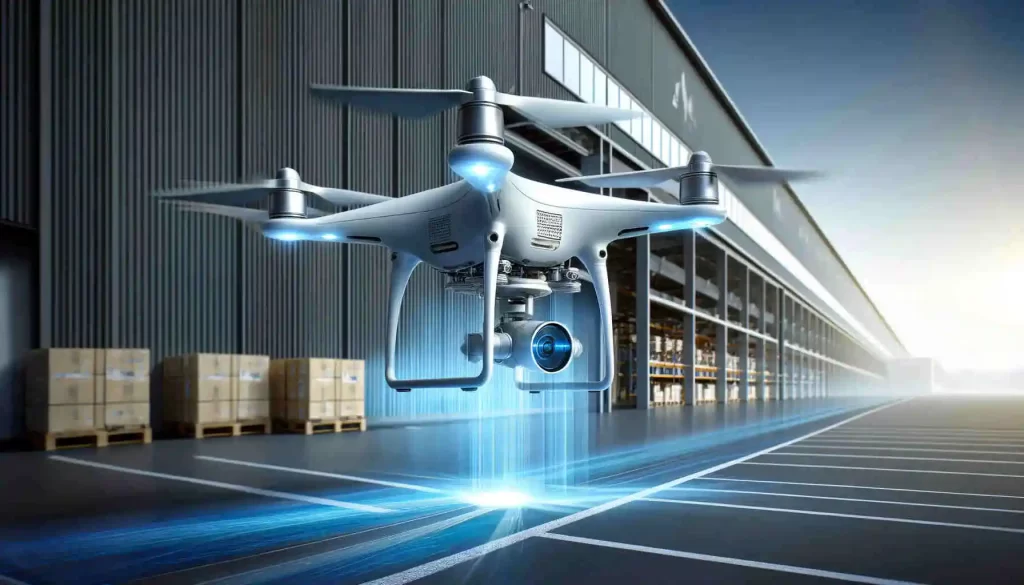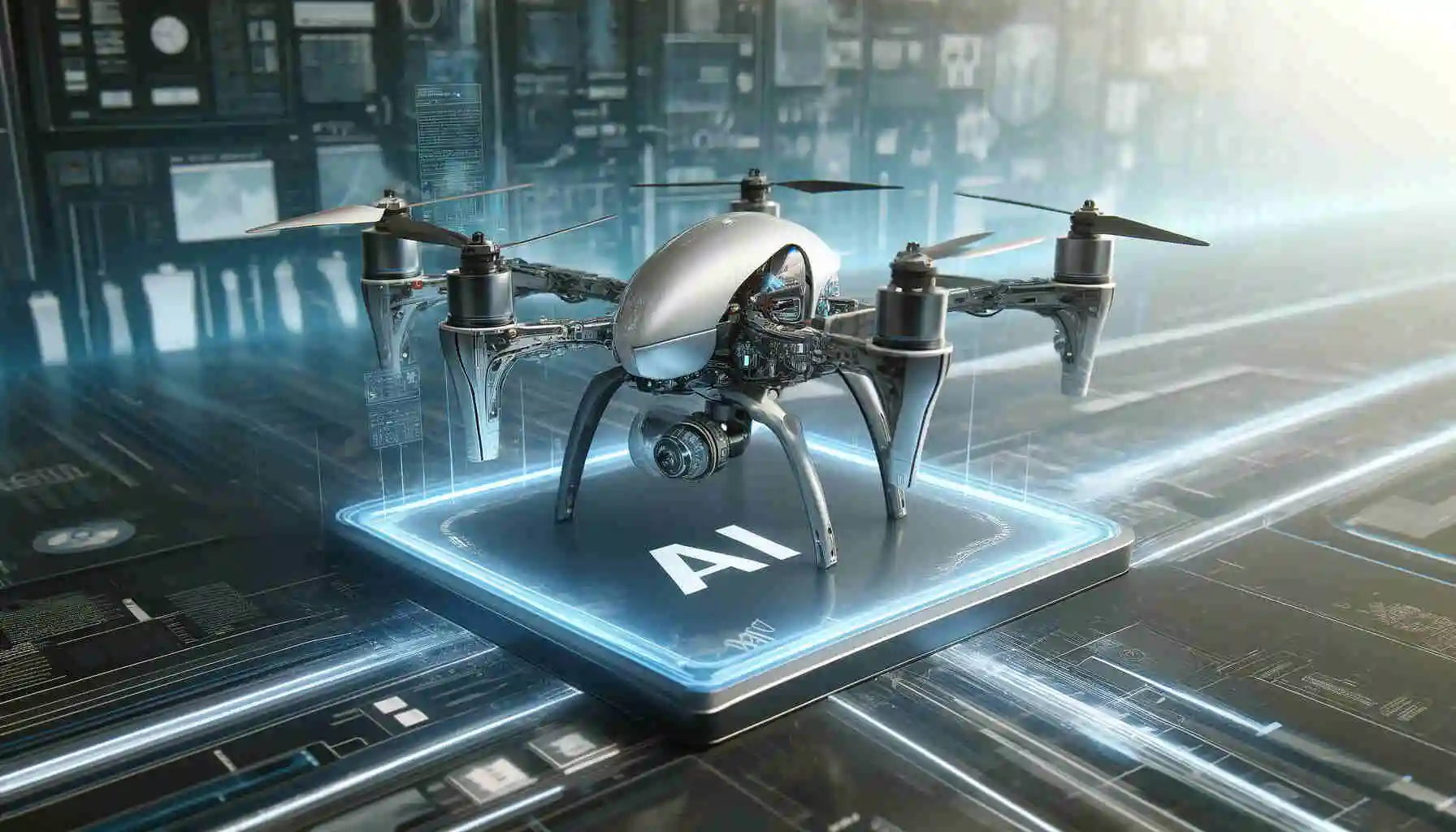Do drones use Artificial Intelligence? Drones, also known as Unmanned Aerial Vehicles (UAVs), are increasingly incorporating artificial intelligence (AI) to enhance their capabilities. This combination is revolutionizing the way drones operate, opening doors to new applications and improved performance.
Table of Contents
Do Drones use Artificial Intelligence? You bet!
Imagine a remote-controlled aircraft that can fly autonomously, make decisions on its own, and even adapt to changing situations. That’s the potential of AI-powered drones. Here’s a quick breakdown:
- Drones: Flying machines operated remotely or autonomously, used for various purposes like photography, videography, and delivery.
- AI: The ability of machines to mimic human intelligence, enabling them to learn and act independently.
By integrating AI, drones gain new abilities like:
- Self-navigation: Flying pre-programmed routes or navigating complex environments without human input.
- Object recognition and tracking: Identifying and following specific objects, useful for search and rescue or surveillance.
- Real-time data analysis: Processing data collected during flight to make informed decisions.
Evolution of Drone Technology
Drones have come a long way from their early, rudimentary designs. Here’s a simplified timeline highlighting the role of AI:
- Early Drones: Primarily remote-controlled with limited capabilities.
- GPS Integration: Enabled pre-programmed flight paths, increasing control and accuracy.
- Introduction of AI: Early AI algorithms for basic obstacle avoidance and stabilization.
- Advanced AI Integration: Sophisticated machine learning allows for complex decision-making and autonomous flight.
The future of drone technology holds immense promise, with AI playing a central role in pushing the boundaries of what’s possible.
AI in Drones: How Does It Work?
Imagine a drone that can identify and avoid power lines while autonomously delivering a package. This is the power of AI in action. Here’s a glimpse into the mechanics:
- Machine learning: Drones are trained on vast datasets of images and sensor data. This data trains algorithms to recognize objects, predict flight paths, and adapt to their surroundings.
- Sensors: Drones use various sensors like cameras, LiDAR (Light Detection and Ranging), and radar to gather real-time information about their environment.
- Algorithms: The AI algorithms process sensor data, allowing the drone to understand its surroundings, make decisions, and perform tasks.
Applications of AI-Enabled Drones: Soaring to New Heights
AI-powered drones are no longer science fiction. Drones, equipped with artificial intelligence, are transforming numerous industries. Here’s a glimpse into how do drones use Artificial Intelligence to revolutionize drone applications:
- Agriculture:
- Field monitoring: Drones can autonomously map fields, identify crop health issues, and optimize irrigation using AI-powered image analysis.
- Precision spraying: AI-controlled drones can target specific areas with pesticides or fertilizers, reducing waste and environmental impact.

- Search and Rescue:
- Faster coverage of large areas: AI helps drones navigate complex terrains and weather conditions, searching for missing persons efficiently.
- Thermal imaging analysis: AI algorithms can identify heat signatures from survivors, even in low-light conditions.
- Delivery Services:
- Autonomous deliveries: AI allows drones to plan efficient routes, avoid obstacles, and deliver goods to designated locations.
- Inventory management: Real-time data from drones can optimize stock levels and delivery schedules.
- Infrastructure Inspection:
- Automated inspections: Drones equipped with AI can autonomously inspect bridges, pipelines, and wind turbines for damage.
- Data analysis and reporting: AI can analyze images and sensor data to identify potential problems and generate detailed inspection reports.
- Security and Surveillance:
- Enhanced border patrol: AI-powered drones can monitor vast areas for unauthorized activities or intrusions.
- Improved situational awareness: Real-time data from drones helps security personnel respond to incidents more effectively.

These are just a few examples of the many applications for AI-powered drones. As AI technology continues to evolve, we can expect even more innovative applications to emerge across various sectors.
Enhancing Flight with AI: Taking Control of the Skies
Imagine a drone that can navigate complex environments, avoid obstacles, and even land safely on its own. AI is making this a reality by significantly improving flight, navigation, and autopilot systems in drones. Read below to find out how do drones use artificial intelligence:
- Autonomous flight: AI algorithms allow drones to fly pre-programmed routes or plan their own paths based on real-time data.
- Obstacle avoidance: Drones use sensors and AI to detect and avoid obstacles like trees, power lines, and buildings.
- Improved stability: AI algorithms can adjust flight patterns in real-time to maintain stability in windy conditions or turbulence.
- Automatic landing: AI enables drones to land precisely at designated locations without human intervention.
These advancements contribute to safer, more efficient, and more reliable drone operations. AI also plays a role in:
- Traffic management: Coordinating the flight paths of multiple drones to avoid collisions in busy airspace.
- Beyond Visual Line of Sight (BVLOS) operations: Enabling drones to fly autonomously over long distances or out of the operator’s direct line of sight.
By enhancing flight capabilities, AI opens doors to a wider range of applications for drones, transforming how we interact with the skies.
The Role of Data Analytics in Drone AI: Making Sense of the Skies
Data is the fuel that powers the answer to the question ‘Do drones use Artificial Intelligence?’. Drones collect vast amounts of data through various sensors like cameras, LiDAR, and radar. Here’s how AI tackles this data:
- Real-time processing: AI algorithms analyze data in real-time, allowing drones to make decisions and react to their environment instantly.
- Object recognition and tracking: AI can identify specific objects in images or sensor data, enabling tasks like search and rescue or infrastructure inspection.
- Data analysis for insights: AI can analyze large datasets to identify trends, predict outcomes, and generate valuable reports.
Here’s a table summarizing the data flow:
| Data Source | Example | AI Function |
| Cameras | Images | Object recognition, anomaly detection |
| LiDAR | 3D point clouds | Terrain mapping, obstacle avoidance |
| Radar | Distance and direction | Navigation, weather monitoring |
Challenges in AI Implementation: Taking Flight with Caution
While artificial intelligence (AI) holds immense promise for drones, implementing it comes with hurdles. Here’s a look at some key challenges:
- Technical limitations: Current AI algorithms may struggle with complex environments or unpredictable weather conditions.
- Data security and privacy: Drones collect vast amounts of data, raising concerns about security breaches and privacy violations.
- Legal considerations: Regulations around airspace management and data privacy need to adapt to accommodate the growing use of AI-powered drones.
- Cost factors: Developing and integrating AI technology into drones can be expensive, limiting accessibility for some users.
These challenges require ongoing research and development to ensure safe, reliable, and ethical AI implementation in drones.
Ethical Considerations on Do Drones Use Artificial Intelligence
The growing use of AI in drones raises ethical concerns that require careful consideration. Here are some key questions:
- Accountability: Who is responsible for decisions made by an AI-powered drone, especially in case of accidents?
- Privacy concerns: How can we ensure data collected by drones is used responsibly and doesn’t infringe on individual privacy?
- Weaponization of drones: The potential for using AI-powered drones for military purposes raises ethical dilemmas.
Addressing these issues is crucial for building public trust and ensuring the responsible development and use of AI-powered drones. AI offers tremendous benefits, but ethical considerations must be addressed to ensure this technology serves humanity for good.
Future Trends on Do Drones Use Artificial Intelligence?
The future of drone AI is brimming with possibilities. Here are some exciting trends to watch:
- Enhanced decision-making: AI algorithms will become more sophisticated, enabling drones to make complex decisions autonomously in real-time.
- Swarm intelligence: Multiple drones equipped with AI will collaborate and communicate, tackling tasks more efficiently.
- Advanced obstacle avoidance: Drones will perceive and avoid obstacles with greater precision using advanced sensors and AI processing.
- Integration with other technologies: AI-powered drones will work seamlessly with other technologies like the Internet of Things (IoT) for broader applications.
These advancements hold the potential to revolutionize various sectors, from infrastructure inspection and delivery services to search and rescue operations. AI will play a central role in shaping the next generation of smarter, more capable drones. With the above information, we hope your curiosity about ‘Do drones use artificial intelligence?’ has been answered properly.
Also read: Artificial Intelligence: All You Need to Know
References:

